Published Jack Cochran on July 18, 2018
Part 2: Analysis of Water in Gasoline
Recently I posted on analysis of water in gasoline using GC-VUV, which is made possible by a strong absorbance response from water, as well as judicious choice of a non-polar 60m x 0.32mm x 1.0µm Rtx-1 GC column that elutes water before any typical gasoline compounds. In that post I suggested that water-in-gasoline determinations less than 200 ppm were possible using the described conditions. But I work with colleagues who always ask, “Can you go lower?” Do you work with people like that? Annoying, aren’t they? What I meant to say was: “Challenge accepted!”
One of the easiest ways to increase detection capability is by putting more sample on column, if you have the sample loading capacity, which in this case is readily enabled by the 0.32mm x 1.0µm column format. I put more water on column by reducing the GC inlet split ratio. As you can see in Figure 1, changing the split ratio from 200 to 12.5 results in a proportional increase in the water response, with no degradation in peak shape. Versus the previous work, I can push the estimated lower working GC-VUV limit for water-in-gasoline down to about 20 ppm with a GC runtime of 15 min. The selectivity of VUV allows bias-free determination of water, even in the presence of coeluting propane, by employing a spectral filter (Figure 2).
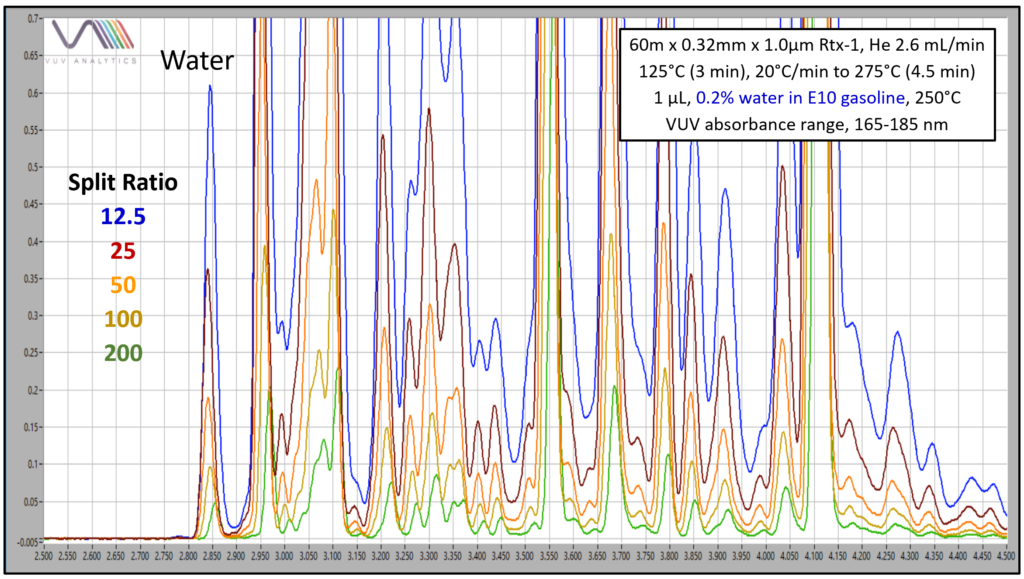
Figure 1. Lowering the GC inlet split ratio can increase detectability for water in gasoline when using GC-VUV. Water shows an excellent peak shape and strong absorbance response.
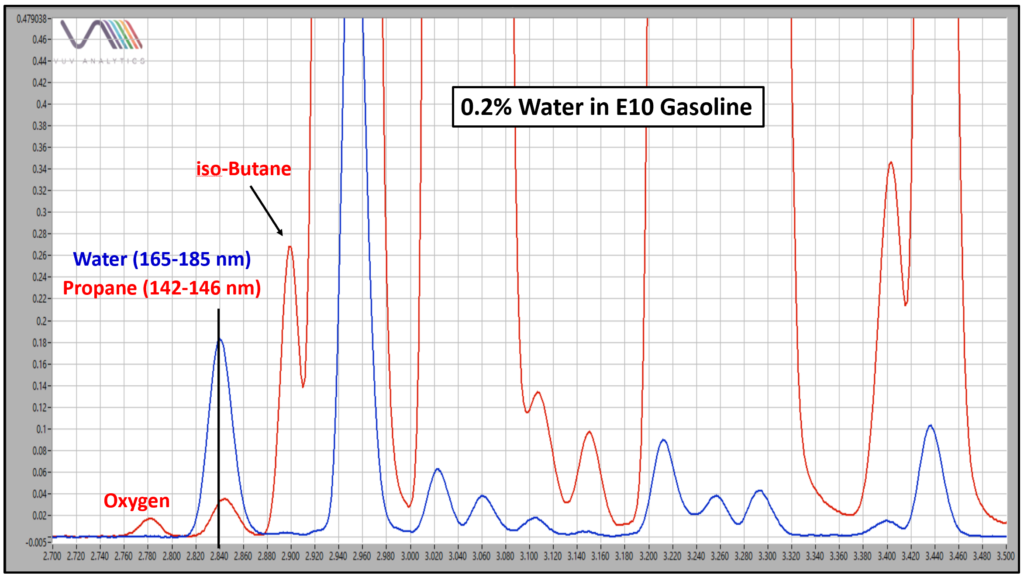
Figure 2. A selective 165-185 nm VUV spectral filter allows interference-free determination of water, even in gasoline that contains propane, a coeluting compound on the Rtx-1 GC column.


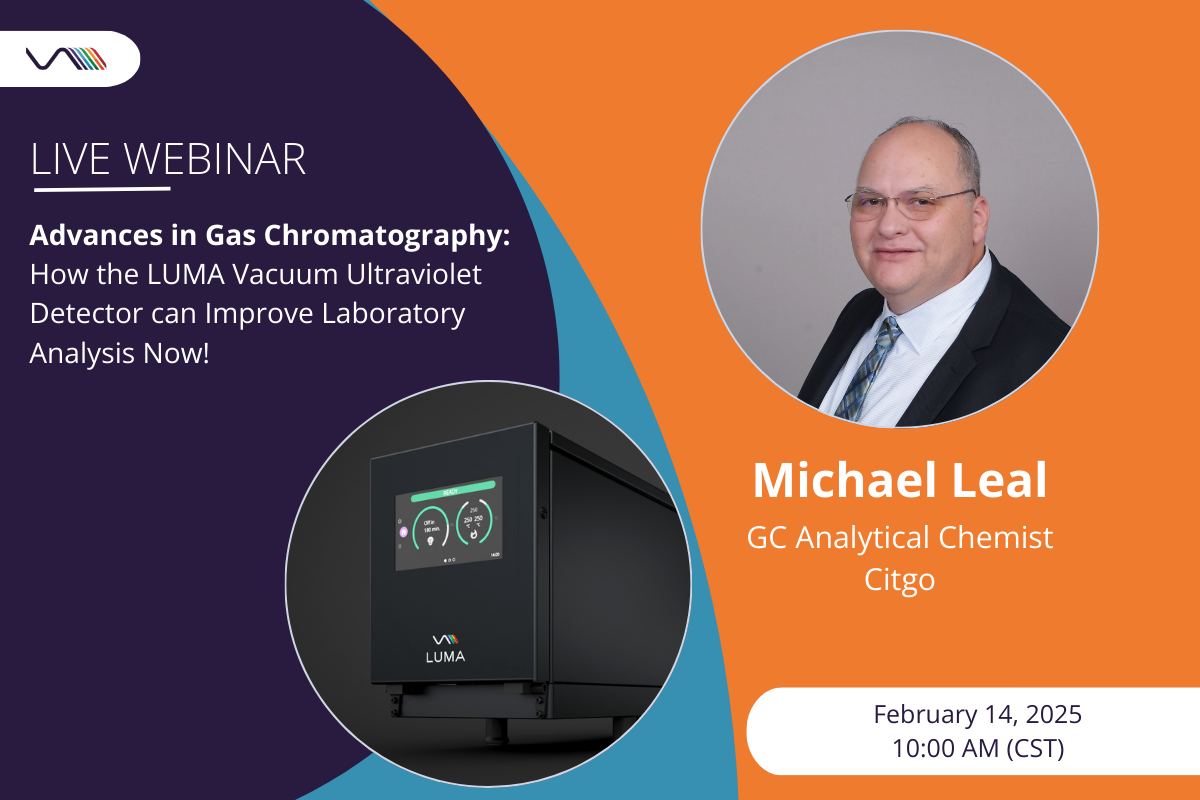
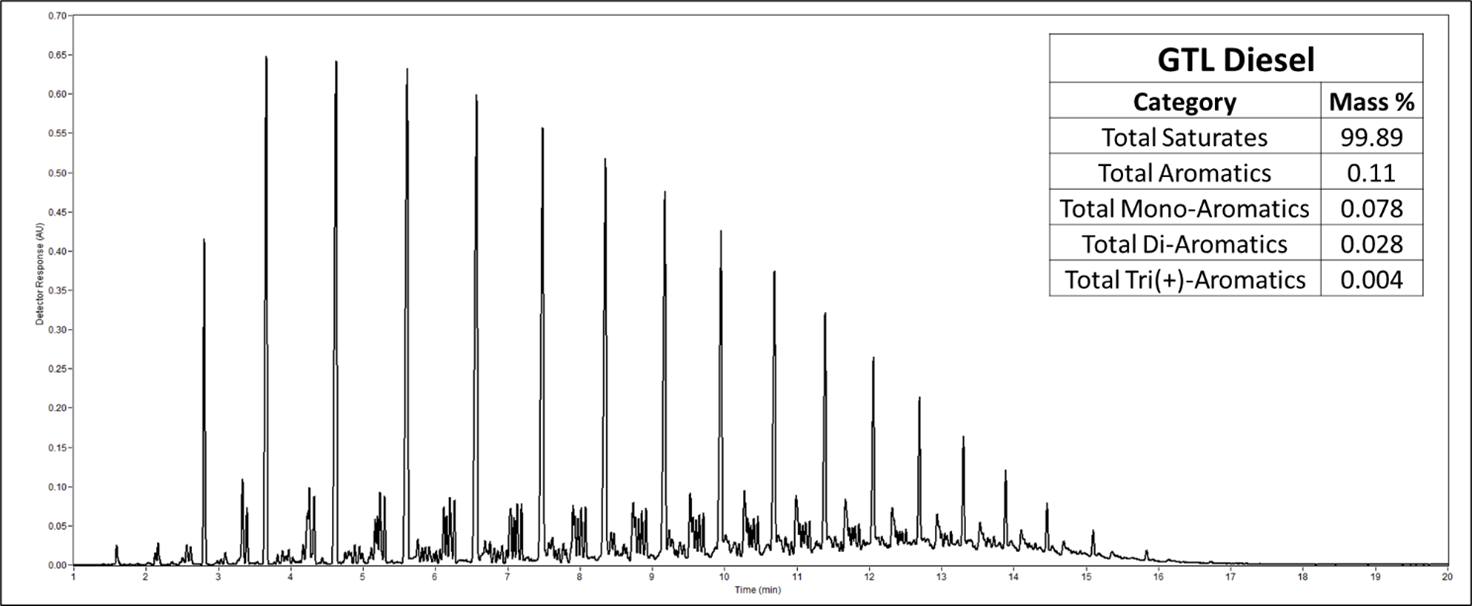
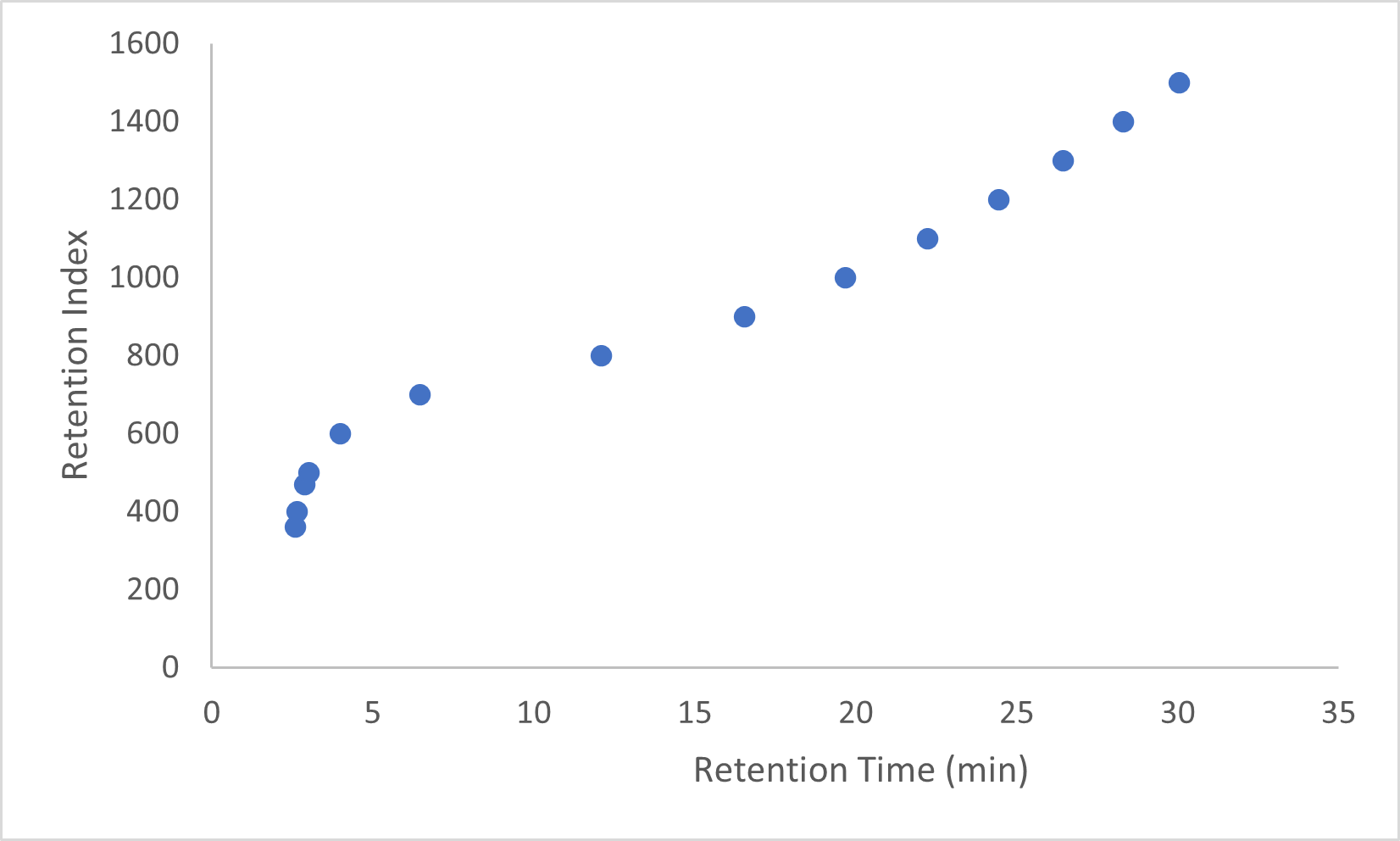





Leave a Reply